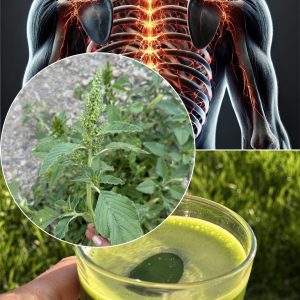Pigweed, often overlooked as just another common weed, is actually a nutritional powerhouse with a host of health benefits. This hardy plant, also known as amaranth, thrives in gardens and fields, but what many don’t know is that it’s packed with vitamins, minerals, and antioxidants that can significantly boost your well-being.
Rich in Nutrients: Pigweed leaves are incredibly rich in vitamins A, C, and K, which are essential for maintaining good eyesight, immune system health, and blood clotting. Moreover, these greens are loaded with essential minerals like calcium, magnesium, and iron, making them an excellent addition to any diet to help combat nutritional deficiencies.
Promotes Heart Health: With its high fiber content, pigweed can help reduce cholesterol levels, which is beneficial for heart health. The fiber works by binding with cholesterol particles and helping remove them from the body, thus reducing the risk of heart disease.
Supports Digestive Health: The fiber in pigweed isn’t only good for the heart; it also aids in digestion. Regular consumption can help maintain a healthy digestive tract, prevent constipation, and promote regular bowel movements.
Anti-Inflammatory Properties: Pigweed contains anti-inflammatory compounds that can help reduce inflammation in the body. This is particularly beneficial for those suffering from chronic inflammatory conditions such as arthritis.
Aids in Weight Management: Low in calories yet high in fiber, pigweed can be a beneficial addition to weight loss diets. The fiber content increases satiety, helping to reduce overall calorie intake by keeping you fuller for longer.
Versatile in Cooking: Pigweed leaves can be used similarly to spinach or Swiss chard. They can be added to salads, soups, and stews or sautéed with a bit of garlic and olive oil for a nutritious side dish. The seeds of the pigweed are also edible and can be used like quinoa.
Incorporating pigweed into your diet is not just a step towards eating healthier but also a move towards sustainable living. As a plant that grows abundantly with minimal water and no pesticides, it represents a step forward in eco-friendly eating practices. So next time you spot these greens at the market or in your backyard, consider the multitude of health benefits they could bring to your table. Enjoy the blend of flavors and nutrients and take pride in making a choice that’s good for both you and the environment.





